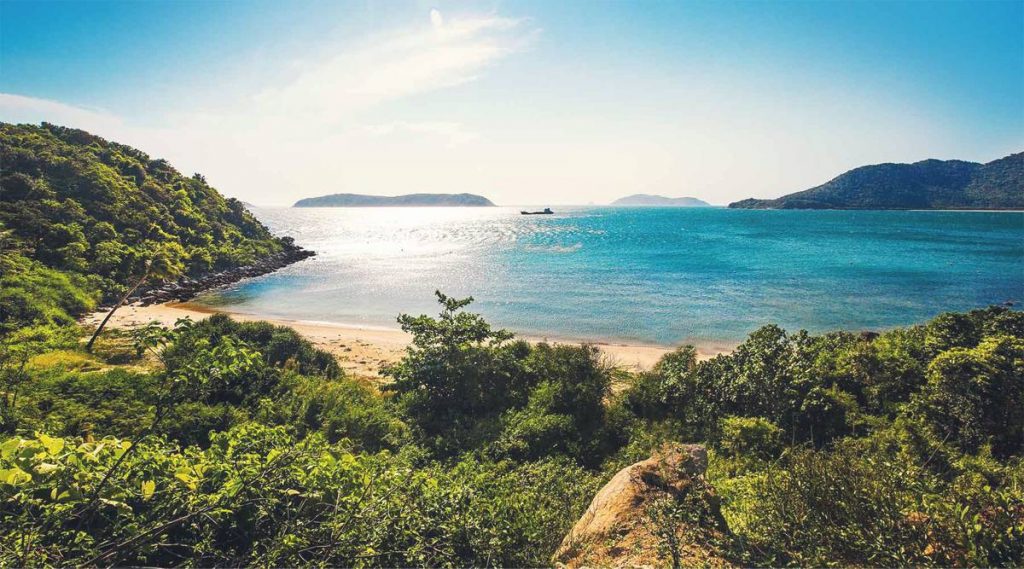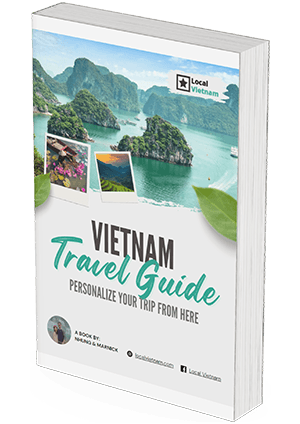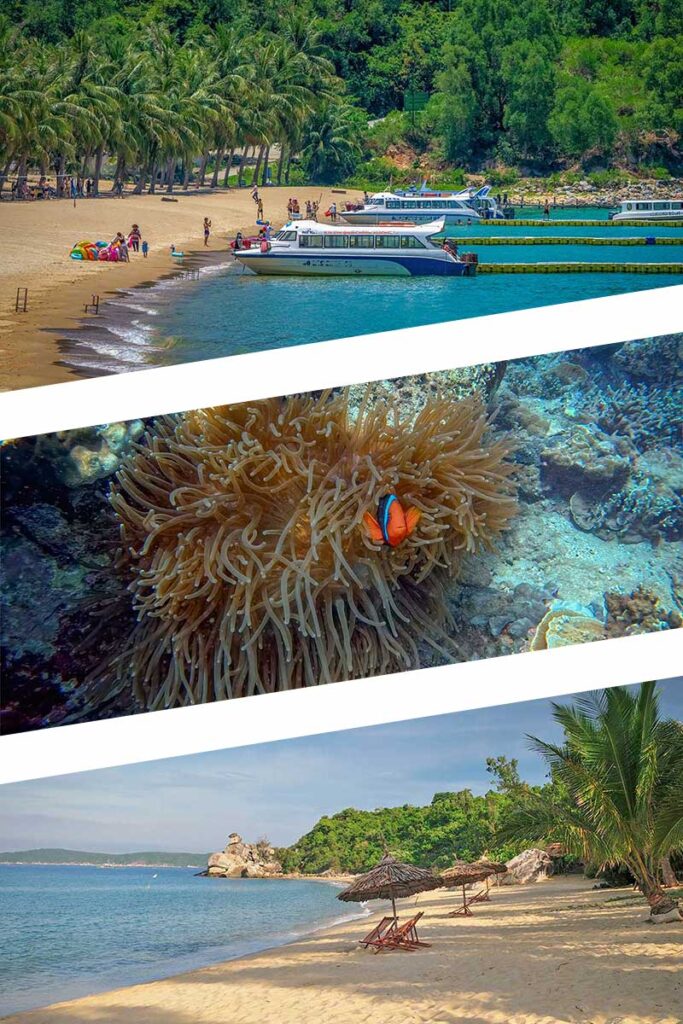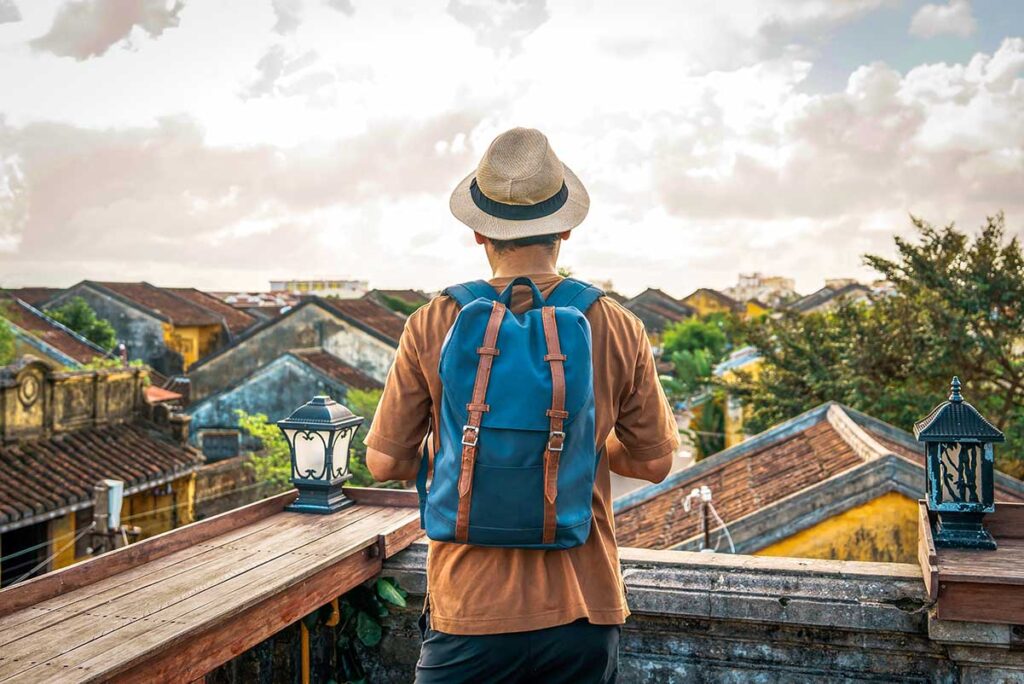What is Cham Island like?
Islands, main village & setting
Cham Island is not just one island but a small archipelago of eight, with Hon Lao being the main inhabited one. Two villages — Bai Lang and Bai Huong — sit on its coast, surrounded by steep hills, coconut palms, and small curving roads that link the beaches.

It’s part of a marine biosphere reserve, so fishing, waste, and plastic use are regulated. Visitors are asked not to bring plastic bags and to avoid touching coral when swimming or diving. The overall feel is quiet and local: fishermen fixing nets by the shore, boats unloading at dawn, and a few homestays scattered along the beaches.
Island rhythm & traveler experience
Cham Island feels like two different places depending on when you arrive. Between 10 a.m. and 3 p.m., dozens of day-trip boats unload crowds for lunch and snorkeling, turning the main beaches lively and noisy. But once the last boats return to Hoi An, everything slows down — you can walk empty beaches, hear the waves, and watch locals cook their evening meal.

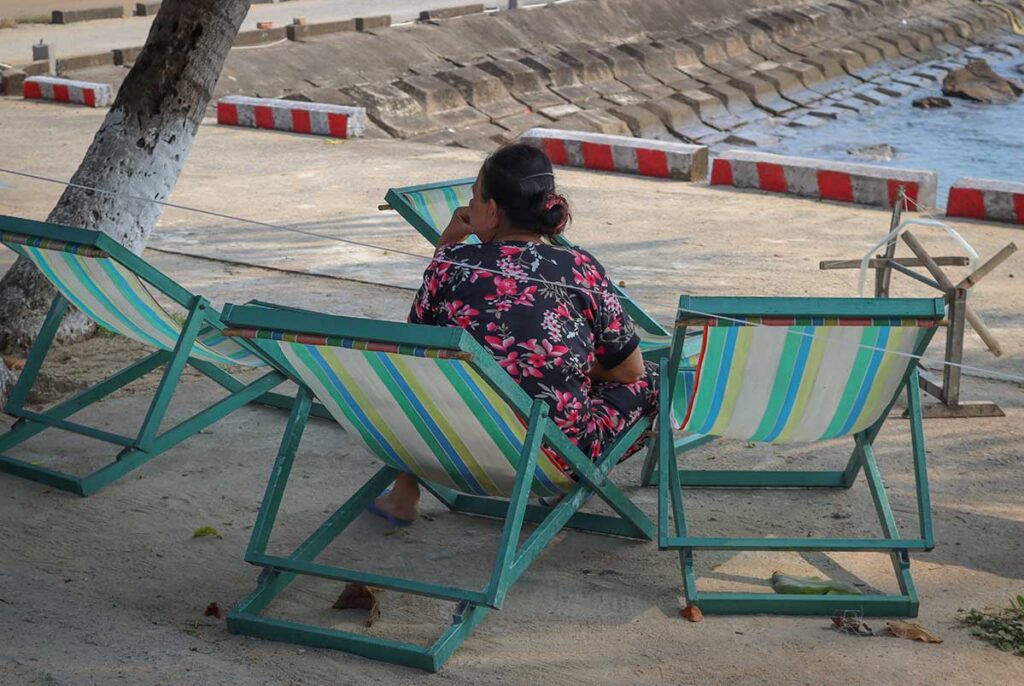
Infrastructure is simple: most accommodation is family-run, power may go off briefly, and restaurants close early. The island’s food scene revolves around seafood, and monkeys are a common sight near the beaches and homestays.
Read more about: best islands in Vietnam.
Best time to visit
Before planning your trip, it’s worth knowing how much the weather shapes your experience on Cham Island. Boat schedules depend entirely on sea conditions, and when the waves get rough, services are often delayed or cancelled. Even when crossings are possible, wind or rain can affect beach time and reduce underwater visibility. Choosing the right month can make the difference between a relaxed island escape and a few hours stuck in bad weather.
Dry season (March–August): beach & water conditions
This is the most reliable time to visit Cham Island. The weather is stable, the sea calm, and boats run daily. The beaches are at their best, with plenty of sunshine and clear, warm water. Snorkeling and diving are usually good during these months, though visibility can still vary depending on wind and tide. If you’re hoping to swim, relax, or explore the island by scooter, this is the ideal season.
Shoulder & rainy periods (September and October–February)
September and early October can still bring nice weather and calm days, but the risk of rain and strong wind gradually increases. From mid-October onward, sea conditions become less predictable and boat trips are often cancelled when waves are high. Even if you make it across, expect occasional showers and less consistent beach weather. December to February tend to be windier and cooler, which limits swimming and snorkeling. It’s not impossible to visit, but this period suits flexible travelers who are prepared for changing conditions.
Travel Tip: Always confirm boat operations 24–48 hours before departure and keep your itinerary flexible. Staying an extra night in Hoi An or Da Nang gives you room to adjust if the sea turns rough.
How to get to Cham Island
There are two main ways to visit Cham Island: join a day tour, which is how most people go, or travel independently — the better option if you plan to stay overnight. Both start from Cua Dai Port near Hoi An, and boat schedules depend heavily on sea conditions.
Day tour from Hoi An or Da Nang
A typical day tour begins with an early pickup from your hotel and a speedboat ride that takes around 20 to 30 minutes to reach the island. Most tours follow the same route: a short stop at the Cham Island Marine Museum and nearby village, followed by a snorkeling session, then lunch and some free time on the beach before heading back in the afternoon.
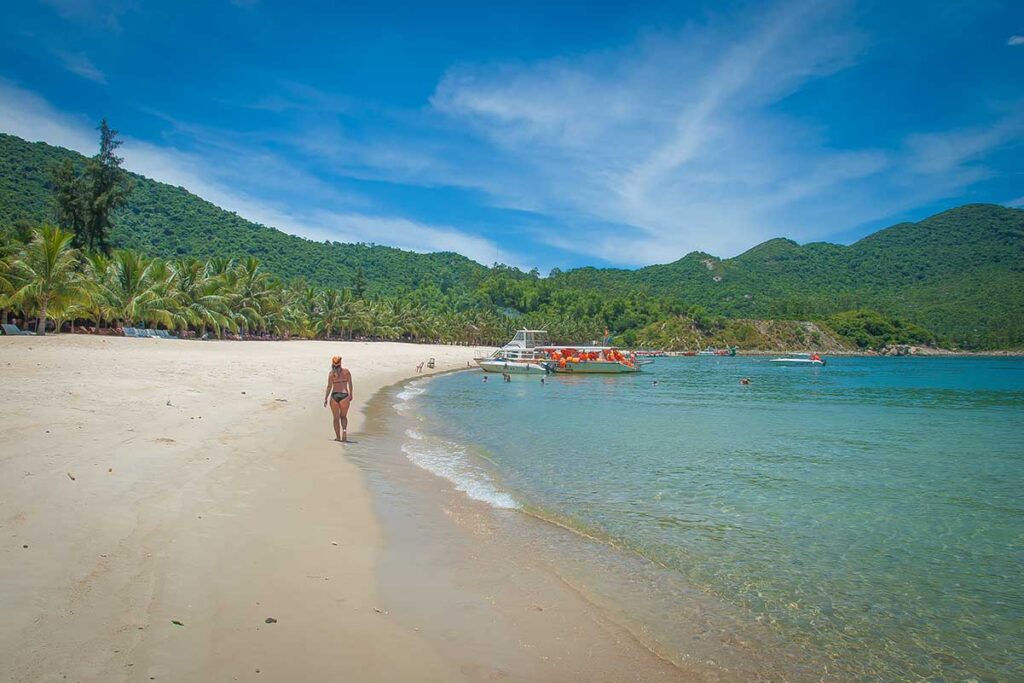
Tours usually include hotel pickup, boat transport, a guide, snorkeling equipment, and lunch. While convenient, they can feel rushed — beaches fill up quickly when dozens of groups arrive at the same time, and snorkeling visibility at shared sites is often poor. Still, if you’re short on time or just want a quick island experience without planning logistics yourself, a day tour does the job.
Cham Island Day Tour & Snorkeling by Speedboat
- Experience: Discover Cham Island’s coral reefs, beaches, and villages on a (private) speedboat tour.
- Includes: Snorkeling, seafood lunch, local guide, and smooth round-trip transfers from Hoi An.
We can also create a private custom-made tour, you can request here.
Travel by yourself (for overnights)
Going independently is the best choice if you want to experience Cham Island’s calmer side. You’ll be able to enjoy quiet mornings, peaceful evenings, and visit beaches once the tour crowds leave.
There are two main boat options. Speedboats take 20–35 minutes and usually depart in the morning, depending on the weather. You can book a seat through homestays, agents, or at the pier. Public wooden boats are slower, taking 1.5–2 hours, and mainly serve locals. They usually leave once a day in the morning and may not operate outside the dry season.
When you arrive, you’ll pay a small entrance and ecological fee at the pier. Bring cash, as card payment isn’t always available. Returning boats also leave in the morning, so plan to spend at least one night. Private or custom speedboats are possible but expensive and must be arranged in advance.
Travel Tip: If you want flexibility without the chaos of a group tour, stay overnight and book a local driver or private boat for a half-day circuit. It’s the easiest way to visit the best beaches and snorkeling areas at your own pace.
Things to do and see on Cham Island
Cham Island isn’t packed with sights, but that’s part of its charm. You come here for relaxed beaches, quiet evenings, and glimpses of local life. The main attractions are simple and close together, so you don’t need a strict plan — just time to slow down and explore.
1. Beaches & swimming
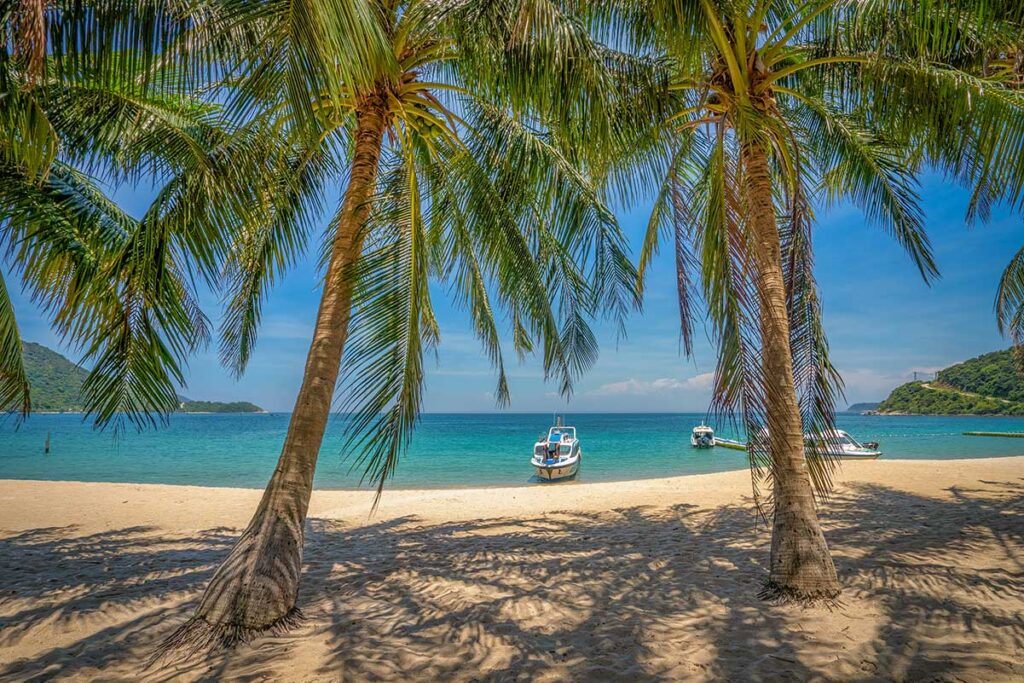
The beaches are easily the island’s biggest draw. Most people head to Bai Ong, where restaurants and chairs line the shore, but it’s busiest around lunchtime when day tours arrive. The best time for a swim is late afternoon, after 14:00, when the boats have gone and you can enjoy shade from the coconut trees. On some beaches you’ll find chairs that technically belong to nearby restaurants — usually you can use them if you order a drink. For details on each beach, see the dedicated section later in this guide.
2. Snorkeling & boat time
You don’t need a boat tour to snorkel on Cham Island — a few beaches, like Xep, have coral close to shore where you can swim out safely on calm days. Still, the main snorkeling areas are offshore and reached by boat. Joining a small local boat or arranging a half-day trip gives you access to clearer water and more marine life.
Visibility is best during calm weather and early in the dry season, but it can change quickly with wind or swell. Always avoid standing on coral or touching marine life. If you’re joining a snorkeling tour, gear is usually provided; otherwise, bring your own mask and fins for swimming off the beach.
3. Simple cultural stops
Besides beaches and sea views, Cham Island also has a few small cultural spots worth a short visit. They’re all located around Bai Lang village, easy to explore on foot within an hour or so. None are major sights, but together they give a glimpse into the island’s history, beliefs, and daily life.
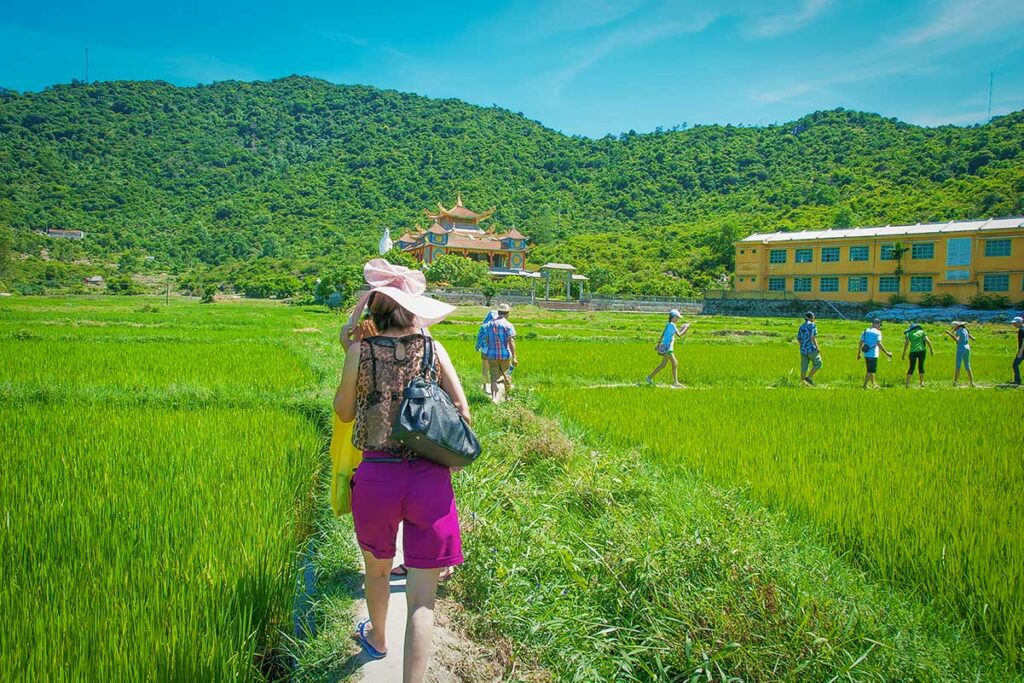
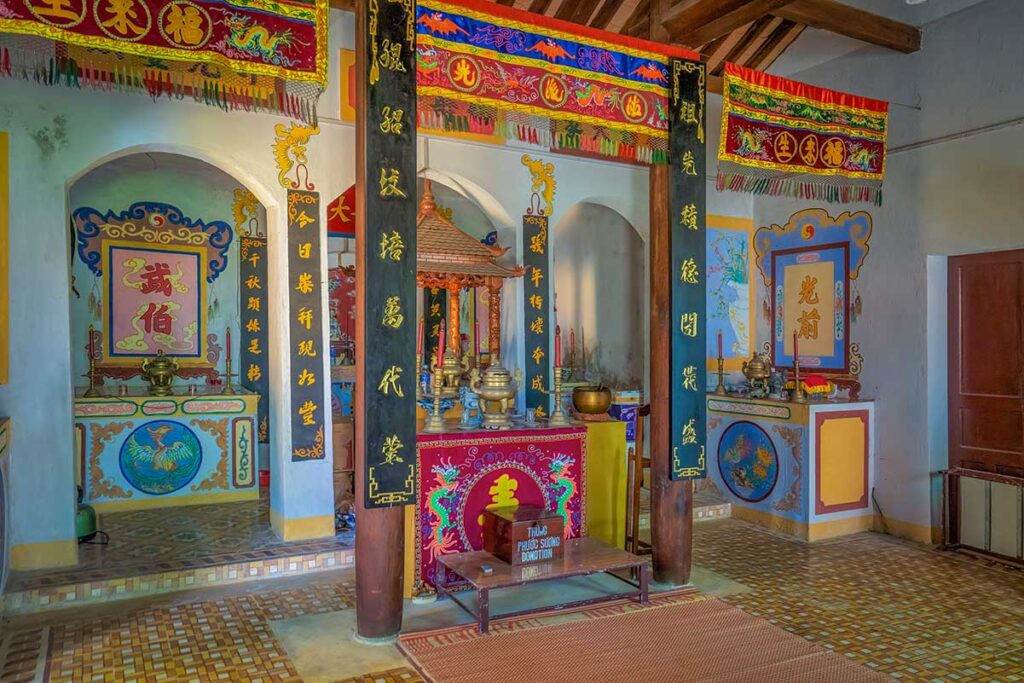
Hai Tang Pagoda sits near Bai Lang and is worth a short, respectful visit. Built in the 18th century, it remains an active place of worship for local fishermen and offers a calm spot with views toward the hills.

Ancient Cham Well (Gieng Xom Cam) is a small but interesting reminder of the island’s Cham heritage. It’s said to provide the only freshwater unaffected by salt, and locals still use it today.

Cham Marine Museum is usually your first stop if you arrive by tour. It’s small and dated, but it gives a quick overview of the island’s marine life and conservation efforts.
Whale and Bird’s Nest Temples are scattered across the villages and reflect local spiritual life. Fishermen believe whales protect them at sea, and every spring, festivals honor both the whales and the people who once harvested bird nests from the cliffs.
4. Scenic drives and viewpoints
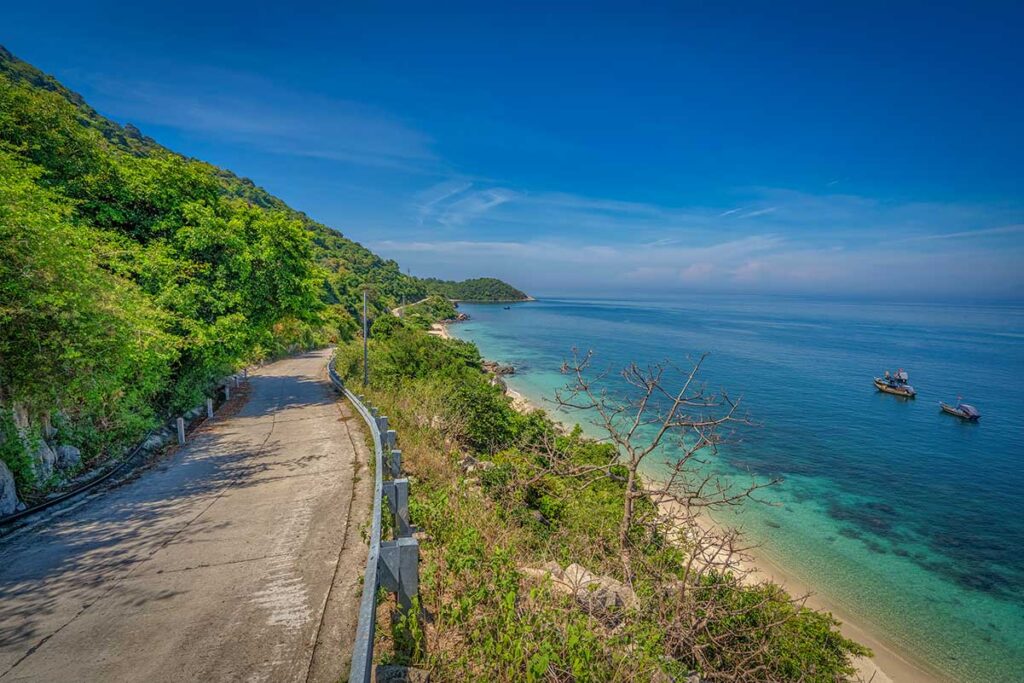
One of the best ways to appreciate Cham Island is simply by exploring its coastal road. The loop around Hon Lao offers changing scenery at every turn — from fishing villages and calm beaches on the western side to cliffs and open sea views on the east. Even a short ride reveals how small and beautiful the island really is.
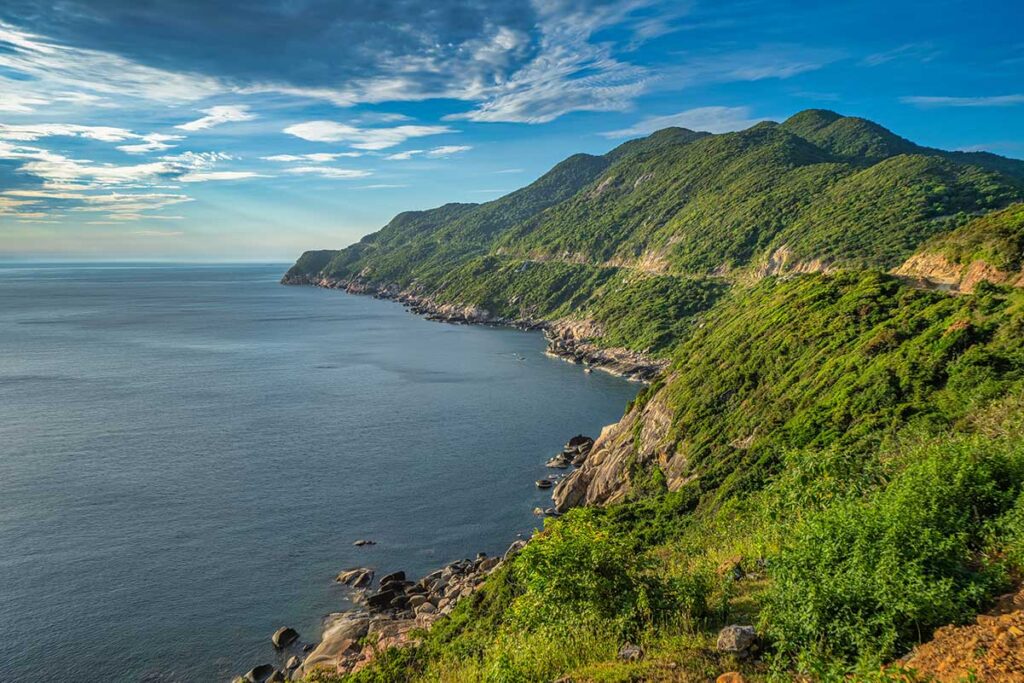
Along the way, a few spots stand out for their views. Eo Gio (Windy Strait) is an easy stop and a favourite for both sunrise and sunset. The cliffs overlook the sea and smaller offshore islets, and on calm days the view is spectacular.
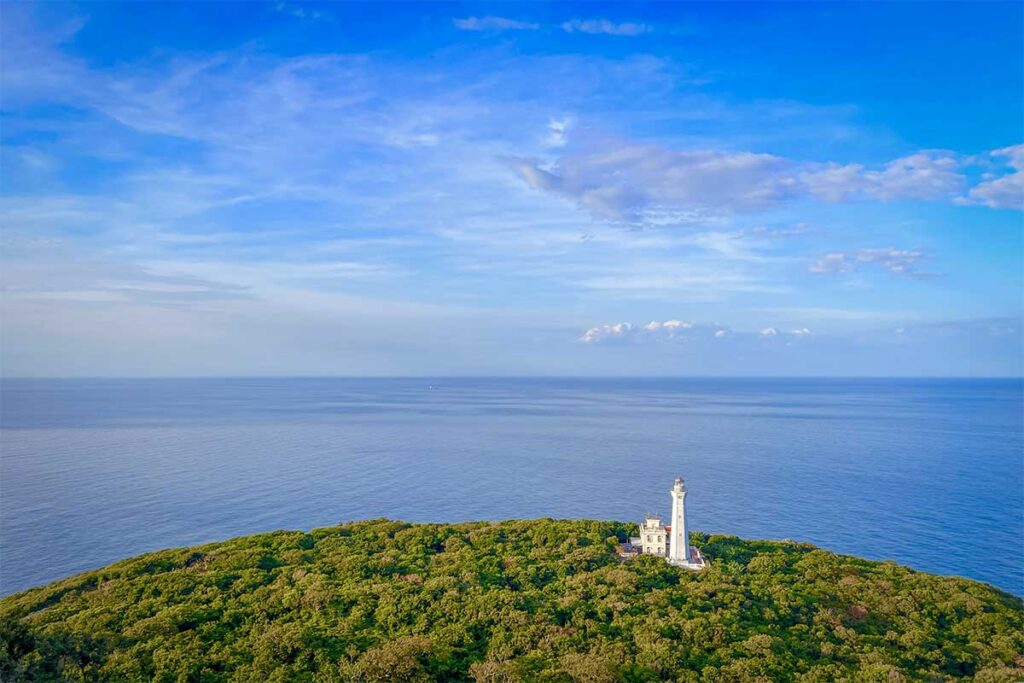
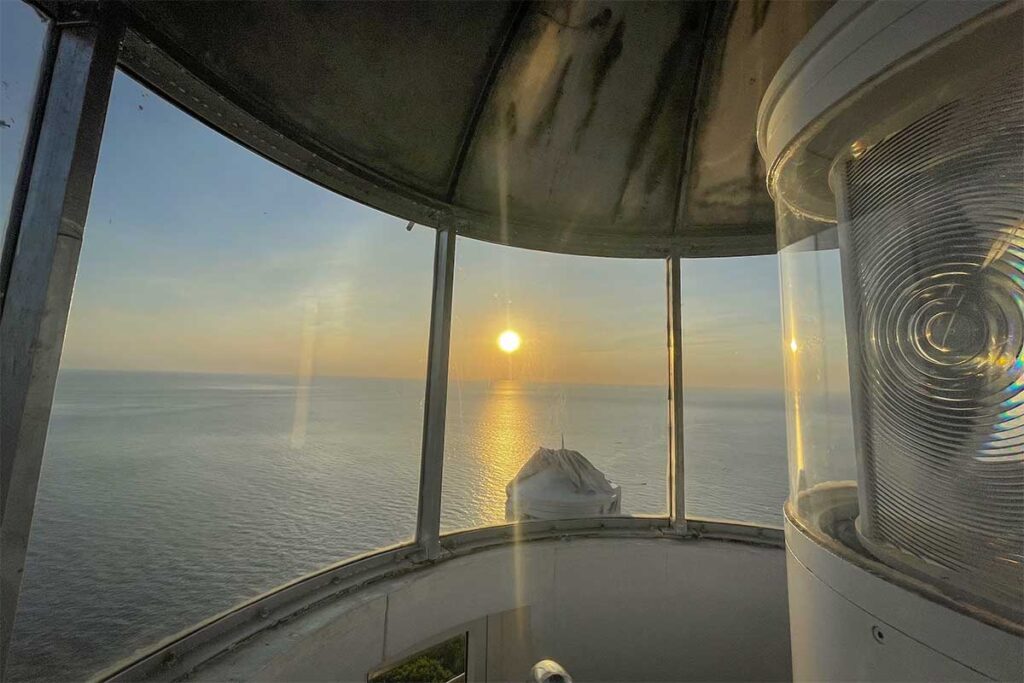
The lighthouse area on the northern headland also promises wide panoramas, though access is occasionally closed due to military restrictions or landslide repairs. Even if you can’t reach the top, the road leading there has excellent coastal scenery.
It’s worth driving slowly and stopping wherever the view catches your eye — the combination of ocean, forest, and red-dirt roads is what makes Cham Island’s landscape so special.
5. Easy island life
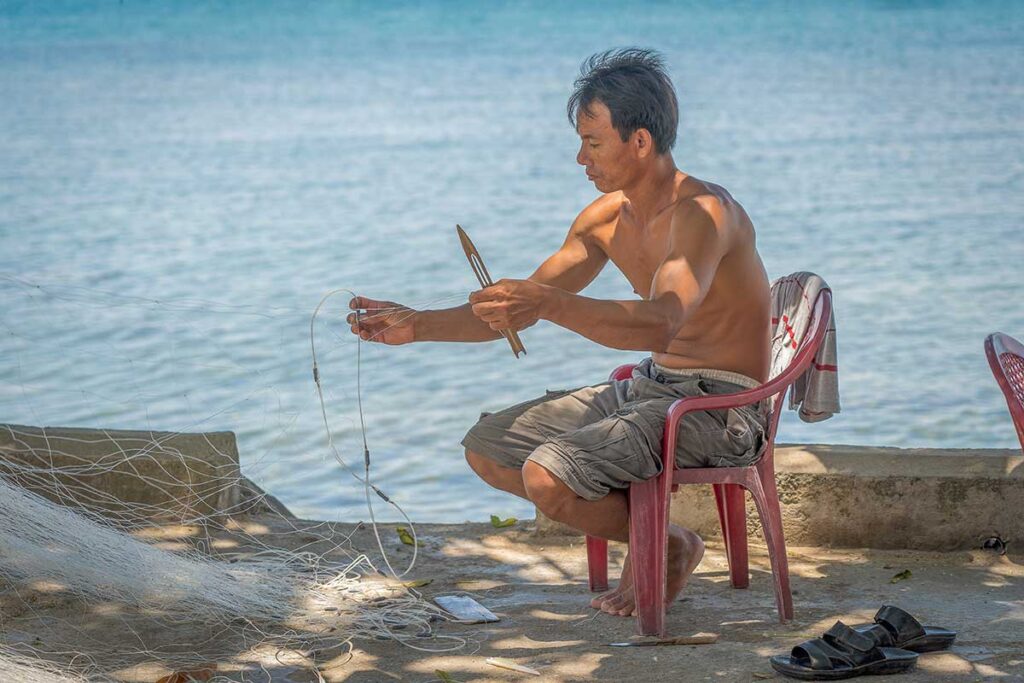
If you stay overnight, take time to simply experience local life. Watch fishermen mend their nets at dawn, wander through the small market, or have morning coffee by the pier while schoolchildren walk past in uniforms.
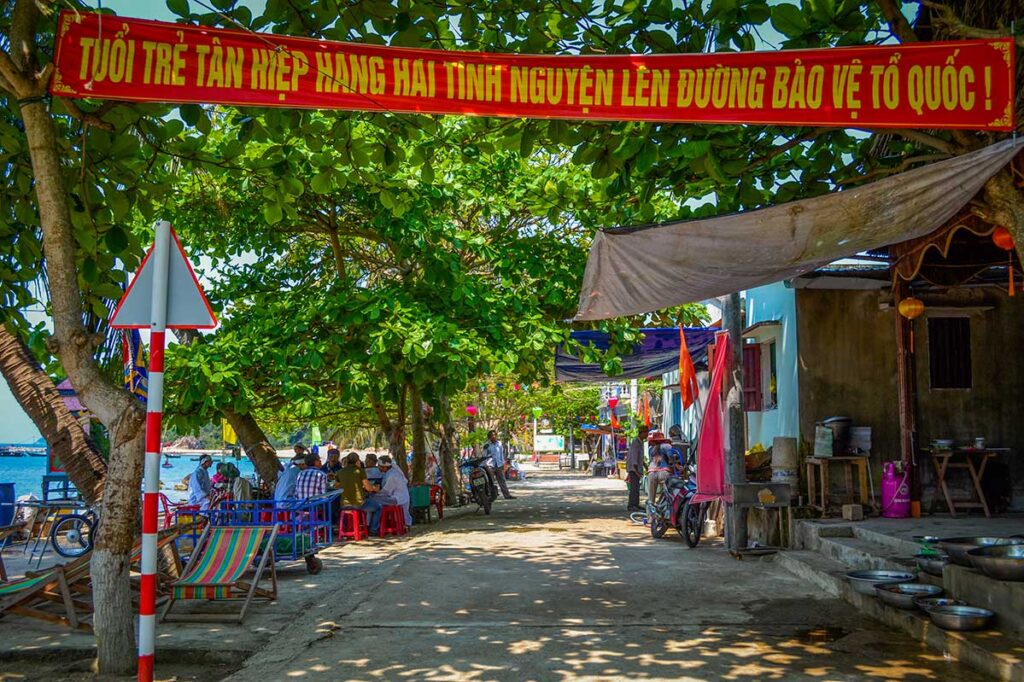
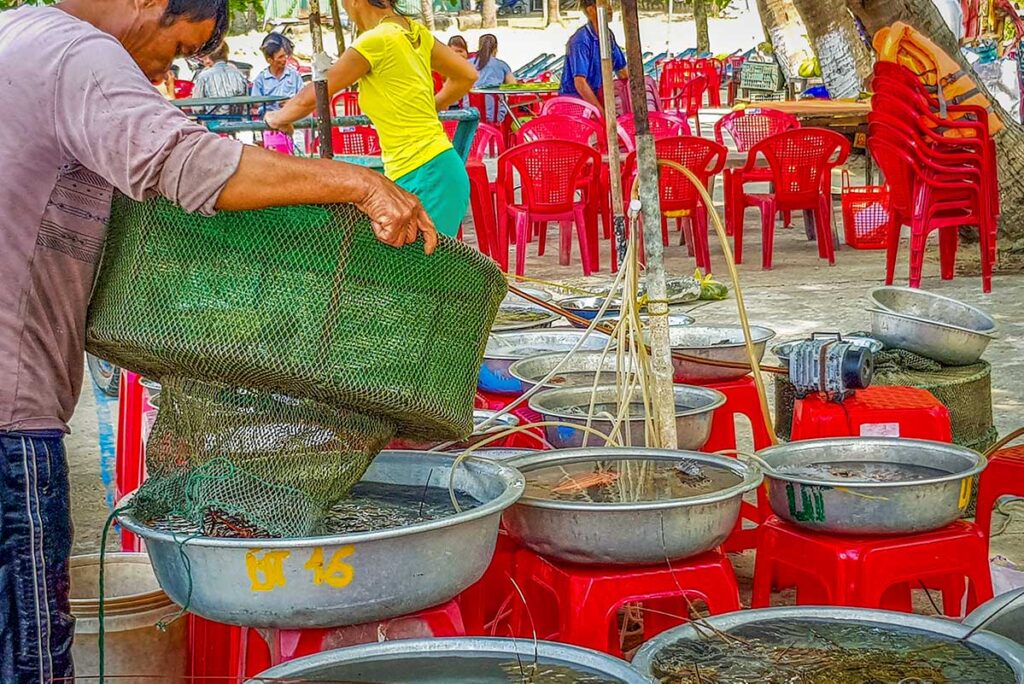
Evenings are quiet — the sound of karaoke may drift through the village, but after dark the island slows to a peaceful rhythm. With almost no light pollution, it’s one of those rare places where you can still see the stars clearly.
Snorkeling and diving conditions
What you can (and can’t) expect
Snorkeling and diving around Cham Island can be great — but it really depends on the day. Visibility changes quickly with wind, current, and tide, sometimes crystal-clear in the morning and cloudy by afternoon. The most popular tour sites are often crowded and not always the clearest, but smaller coves and off-the-beaten-path spots can surprise you with healthy coral and good fish life. You might spot clownfish, parrotfish, and schools of smaller reef fish among soft corals. Sea snakes are sometimes seen too — they’re harmless if left alone, so simply keep your distance.

How to go
You can either join a shared snorkeling trip or arrange a private boat. Shared tours are the easiest and cheapest option, typically included in day trips or bookable through your homestay. They visit fixed sites and provide all gear, but expect mixed skill levels and short stops. A private boat costs more yet offers freedom to visit quieter reefs or combine snorkeling with beach time — ideal if you stay overnight.
For diving, Cham Island has several operators based in Hoi An, such as Cham Island Diving and Blue Coral Diving. They run day trips with full gear and certified instructors. Most dives are shallow (6–18 meters) and suitable for beginners, though certified divers can reach deeper spots with more variety. Diving season runs roughly from April to September, when water is warm and clear enough to make it worthwhile.
Practical tips
Bring your own mask and snorkel if you care about fit or hygiene, but for organized boat trips, equipment is included. Wear water shoes for rocky entries and a rashguard to avoid sunburn and jellyfish stings. Always use reef-safe sunscreen and float instead of standing to protect coral. Don’t chase or touch marine life, and if you’re new to snorkeling, avoid using long fins unless you can control your kicks — they often do more harm to the reef than good.
Cham Island beaches and islands
Most of the beaches on Cham Island are found along Hon Lao, the main inhabited island. A few smaller coves exist on nearby islets, but they can only be reached by boat and are rarely included on short tours. Beaches here are generally small, with soft white sand and clear water, though facilities range from simple to none at all. A couple of spots are temporarily closed or only partially accessible, so it’s best to check locally before setting out.
Bai Ong

This is the busiest and most accessible beach on the island, right next to the main pier. It has soft sand, calm water, and plenty of coconut shade, making it the easiest option for swimming. Facilities include showers and toilets, though they’re basic. The beach fills up around midday when tour groups arrive for lunch, but after 14:00 it becomes far quieter. Some restaurants charge a small fee to use their chairs unless you order a drink.
Bai Xep
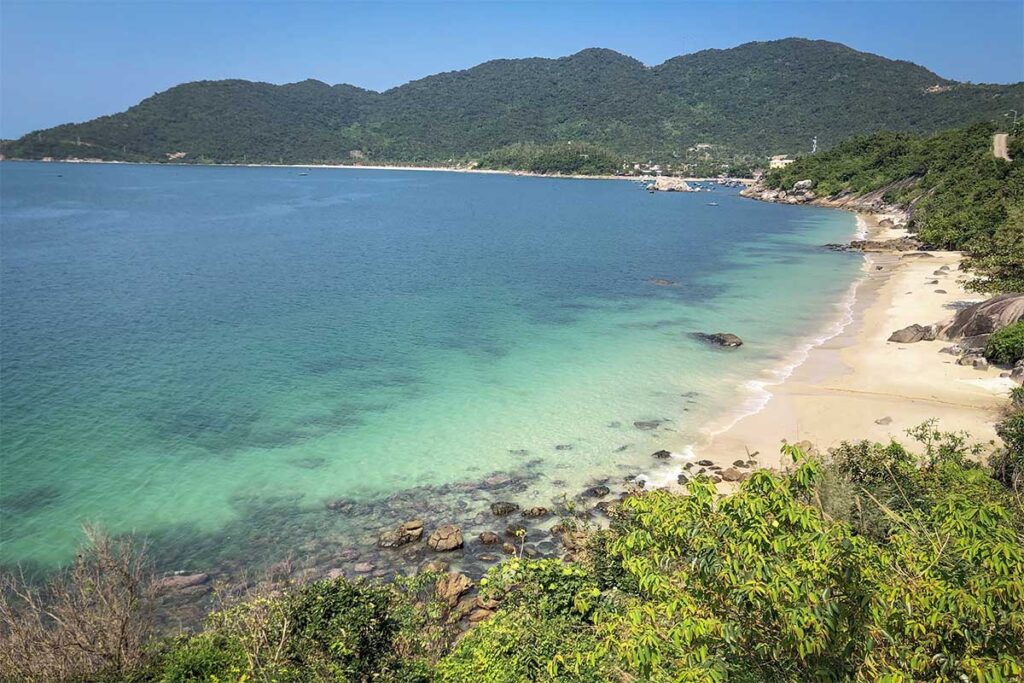
A short drive or 20-minute walk from Bai Lang, this small beach feels far more peaceful. It has clear water, light snorkeling right off the shore, and soft sand framed by greenery. There are no restaurants or shops here, so bring your own water and snacks. It’s a great place to relax for a few hours, especially in the late morning or early afternoon.
Bai Lang (central beach)
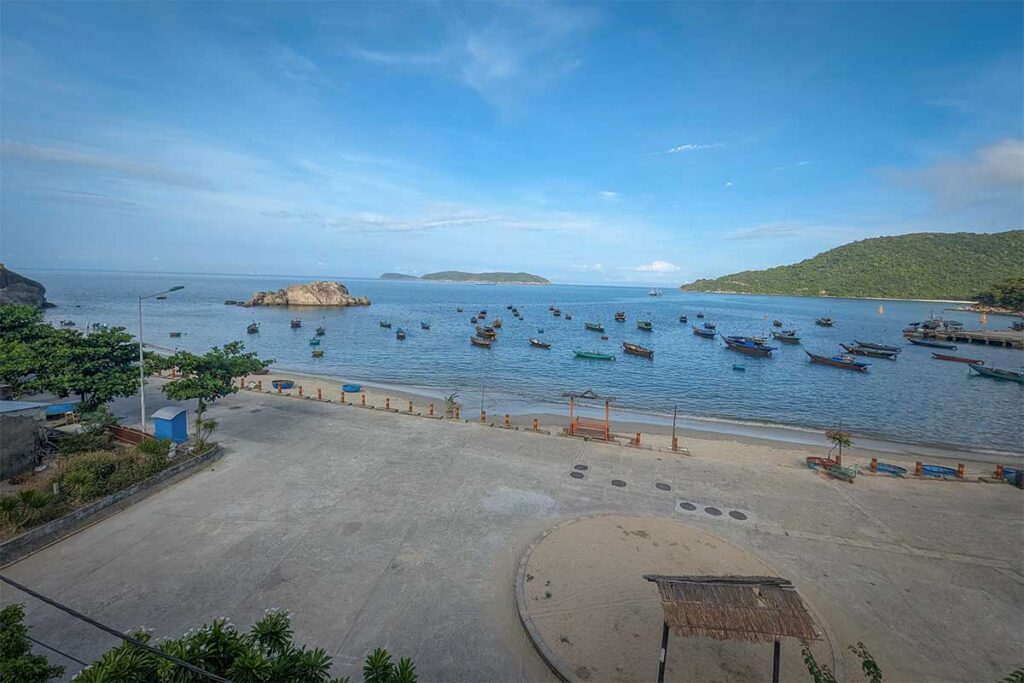
Located in the main village area, this is where most boats anchor. The water here is busy with fishing activity, so it’s not suitable for swimming. However, it’s a pleasant area to stroll, grab a coffee, or watch local life. Many small shops and homestays are within walking distance.
Bai Huong
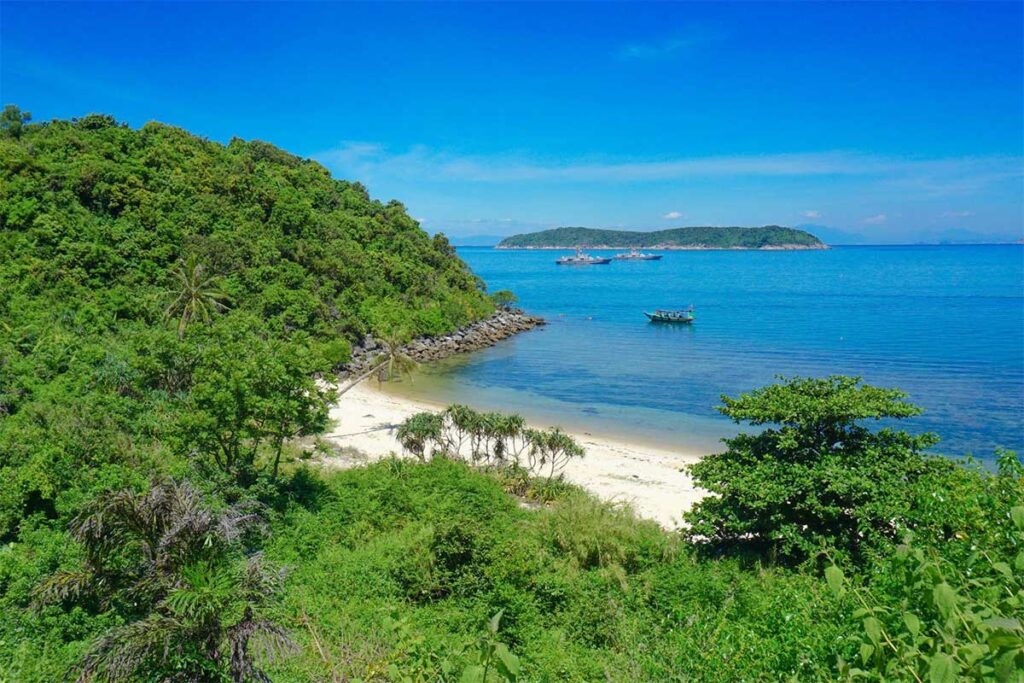
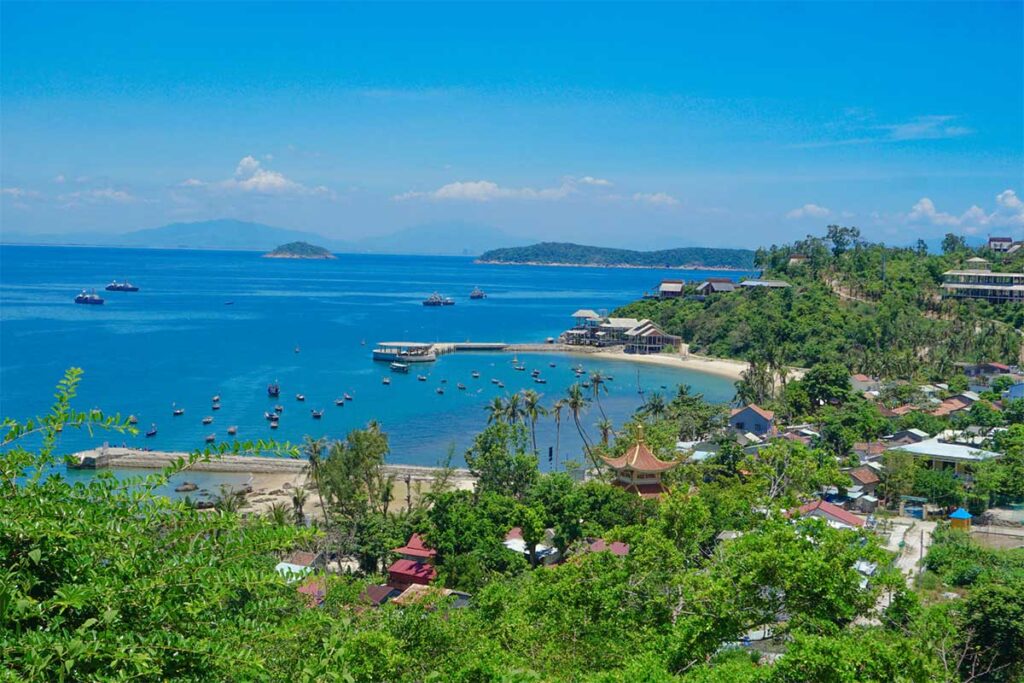
A quieter fishing village on the southern side of the island, Bai Huong offers a slower pace and great seafood lunches. It’s more about the atmosphere than swimming — there are boats moored in front of the village — but it’s ideal if you want to combine a local meal with a short walk through the community.
Bai Chong
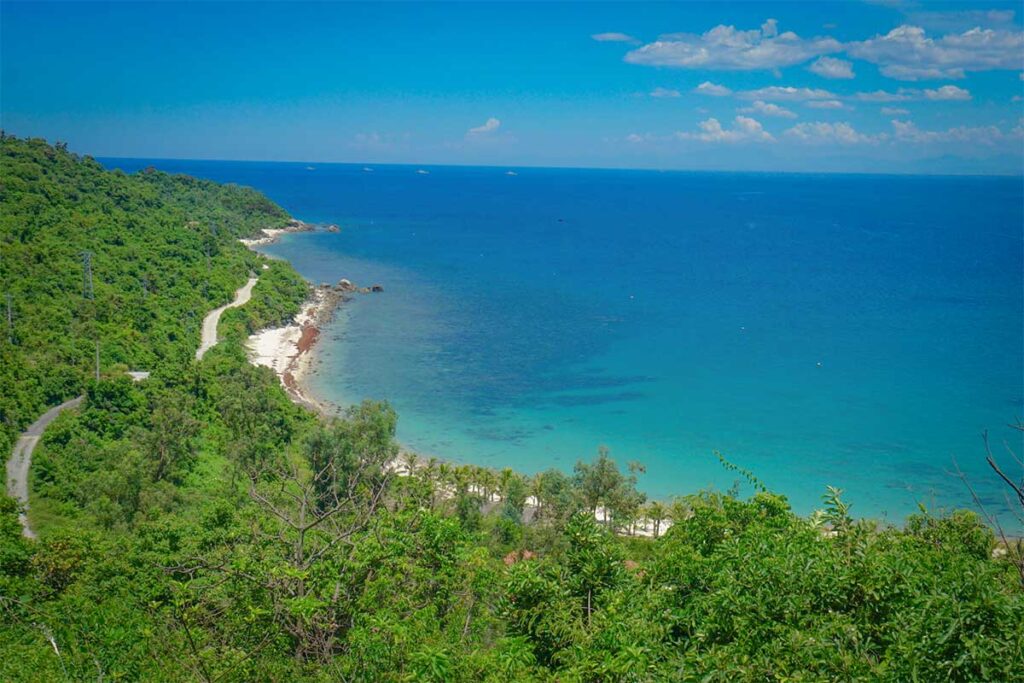
If open, Bai Chong has a mix of smooth rock formations and sandy patches, with shallow water for swimming. Facilities usually include small restaurants and simple showers, but it sometimes closes depending on sea conditions and maintenance. Check locally before visiting.
Bai Bim
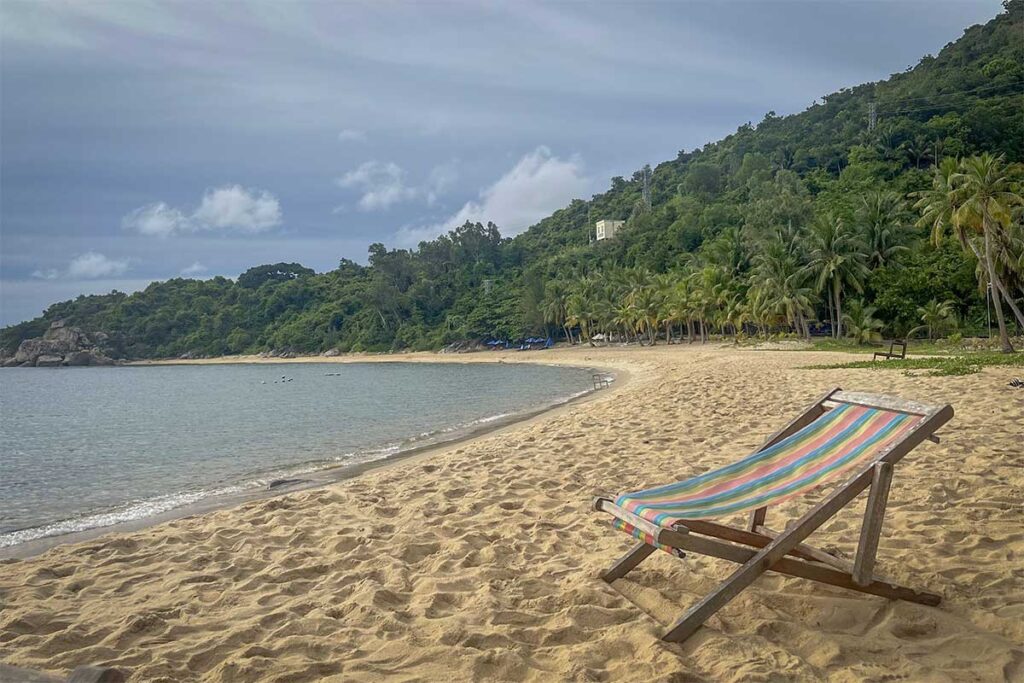
Technically closed due to an abandoned resort project, Bai Bim is one of the most beautiful stretches of coast on the island. When accessible, it has soft sand, palm trees, and excellent snorkeling right from the beach. Because it’s fenced off in parts, access depends on the guards or local boatmen — ask your homestay for the latest information before attempting to go.
Off-island coves
Smaller islets around Hon Lao have pristine water and coral reefs but no facilities. They can only be reached by private boat and are occasionally included in customized snorkeling trips.
Travel Tip: After storms, some beaches collect driftwood and debris for a few days. Ask your homestay which bay is clearest before heading out — locals always know which side of the island is calmest that day.
Staying on Cham Island (Hon Lao)
Accommodation on Cham Island is simple but welcoming — mostly small, family-run homestays that double as restaurants. Evenings are the highlight of staying overnight: quiet beaches, glowing sunsets, and the sound of waves instead of boat engines.
Where to stay & booking strategy
Most places are concentrated in three areas: Bai Lang (the main village and pier), the Bai Ong/Xep stretch (best for beach access), and Bai Huong (a quiet fishing village on the southern side).
Rooms are basic but clean, often with fans or air conditioning, private bathrooms, and the occasional balcony facing the sea. Hot water isn’t guaranteed everywhere, but hospitality usually makes up for the lack of luxury.
There’s limited availability, especially for rooms with sea views, so it’s worth booking one to two weeks in advance during peak season.
Recommended examples:

Coral Homestay: Peaceful location with sea views, friendly owners, and one of the better breakfasts on the island. Slightly more expensive but worth it for the atmosphere.
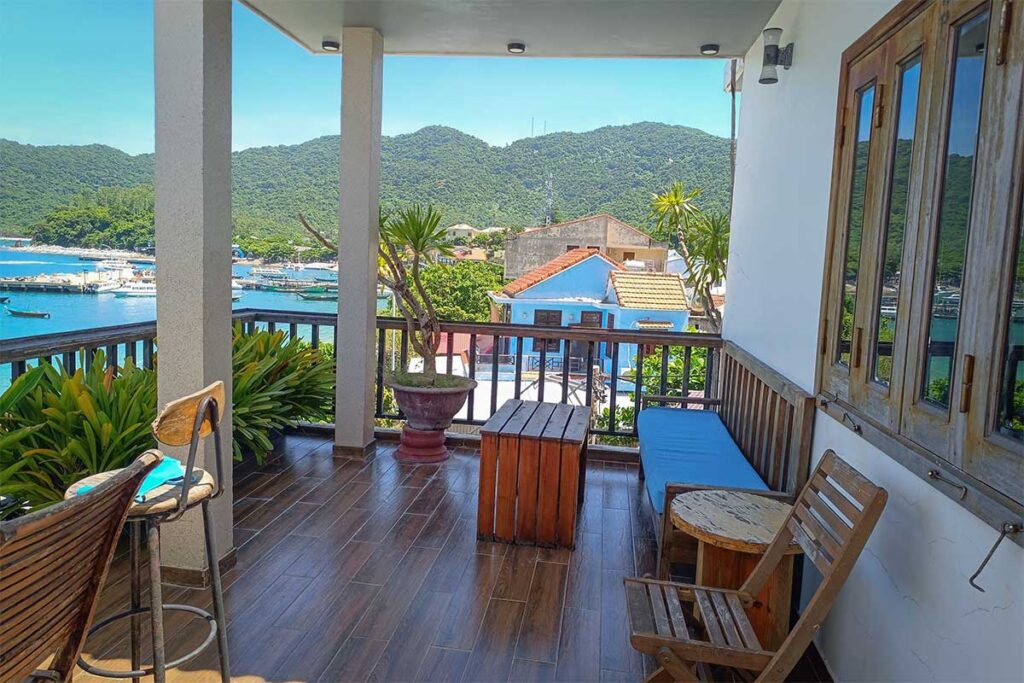
Monkey Homestay: Near the main pier, convenient for boats, cafes, and village life. Rooms are simple and clean, and the hosts help with scooters and tours.
Hammock Homestay: Relaxed, social vibe with garden seating and occasional sea views. Great option if you want a quiet stay with helpful hosts.
Restaurants & eating
If you stay overnight, you’ll probably eat where you stay — and that’s usually a good thing. Most homestays serve freshly caught seafood: grilled squid, clams, and fish cooked with lemongrass or tamarind. Menus are small and service unhurried, but the food is honest and local.

If you don’t eat seafood, most hosts can make simple noodle or rice dishes, though options are limited. Western dishes occasionally appear on menus, but they’re hit-or-miss, so it’s smart to carry snacks or breakfast items, especially if you’re traveling with kids.
Payments are mostly cash-only, though a few homestays now accept cards with a small fee (around 3%). ATMs don’t exist on the island, so plan your cash before boarding the boat.
Getting around the island
Exploring Cham Island is straightforward but requires a bit of care. The easiest way is by scooter, which costs around 150,000–200,000 VND per day.
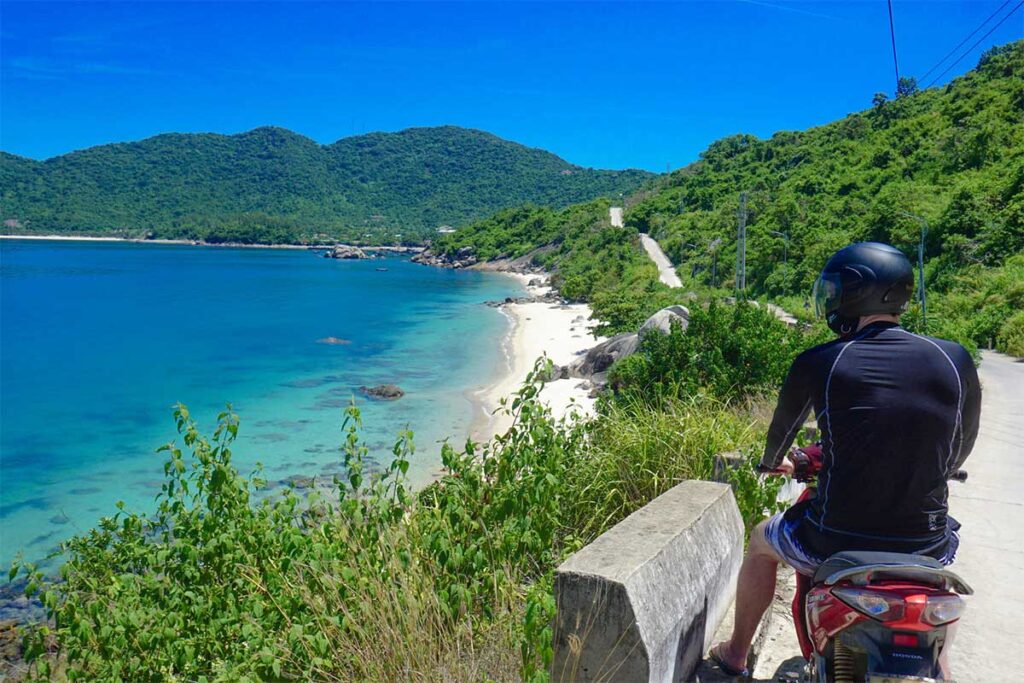
Technically, foreign visitors aren’t supposed to rent scooters due to safety and permit rules, but most homestays will quietly arrange one if you drive confidently and wear a helmet. Roads loop around the island with some steep or eroded sections, especially after storms, so take it slow and avoid night riding — streetlights are few, and stray animals are common.
Electric carts run fixed loops between the main beaches and Bai Lang village. They’re easy and inexpensive (around 30,000 VND per ride) but can’t access the smaller or steeper coastal roads.
Walking is possible between Bai Lang and Bai Ong/Xep, taking around 20–30 minutes each way. The route includes some slopes and limited shade, so carry water and avoid the midday heat.
To reach smaller coves or off-island snorkeling spots, you can hire a private boat. Always agree on the price and duration beforehand — rates depend on fuel and distance.
Some areas, such as the lighthouse and parts of Eo Gio, can be closed without notice after heavy rain or due to military restrictions. Ask locals or your homestay before heading out, as they’ll know which routes are currently open and safe.
Practical tips for Cham Island
What to bring
For day trips, pack light: swimwear, a towel, water shoes, reef-safe sunscreen, and a dry bag or phone case for the boat.
If you’re staying overnight, bring your own toiletries, any medication you might need, insect repellent, a light cover for the evening, snacks for kids, and plenty of spare cash. You can usually leave large luggage at your hotel in Hoi An or Da Nang and travel with just a small overnight bag.
Facilities on the island
Cham Island has no supermarkets or large convenience stores, but you’ll find small family-run shops selling drinks, instant noodles, snacks, and basic toiletries. There are no pharmacies or ATMs, so come prepared. Beach facilities are basic — expect cold showers and limited privacy in changing areas.
Cash & payments
Cash is essential for most things. A few homestays and restaurants now accept card payments, but they add a small fee (around 3%). You’ll also pay two small fees at the pier before boarding: the entrance ticket and an ecological fee (bring small bills for both).
Local etiquette & village life
When visiting temples or pagodas, dress modestly — covered shoulders and knees are appreciated. Ask before taking photos of local people.
Don’t feed the monkeys, and keep bags zipped as they’re quick to grab food. Always take rubbish back with you, and never touch or stand on coral while snorkeling.
Safety, access & conditions
Boats depend heavily on the weather. During strong winds or after storms, crossings may be delayed or cancelled. Roads around the island can be steep or partially eroded, especially near Eo Gio and the lighthouse area, so check conditions before driving there. Stick to daylight travel — night visibility is poor, and roadside cliffs lack barriers. Facilities like toilets or showers at beaches are simple but safe, and keeping valuables secured will help avoid both monkey mischief and accidental loss.
Is Cham Island worth visiting?
Cham Island (Cu Lao Cham) can feel like two very different places depending on how you visit. The experience of a quick day tour contrasts sharply with staying overnight — one shows the island’s busy, tourist-oriented side, while the other reveals its calm rhythm and local life.
Worth a day trip?
A day trip suits travelers who want an easy beach escape from Hoi An or Da Nang without much planning. The beaches are beautiful, and on weekdays or outside local holidays, they’re not nearly as crowded as many expect. Most tours include a short village visit, snorkeling, and lunch by the beach — pleasant and simple, especially if you just want a change of scenery.
Still, standard group tours can feel structured and a bit rushed, with limited time at each stop. Snorkeling visibility also varies depending on the site and weather. Those wanting more freedom can arrange a private or customized day trip, combining the same speedboat transfer with a flexible island program — exploring quieter beaches, stopping for a local meal, or spending extra time snorkeling. (tip! Request a custom private trip here)
Worth an overnight stay?
Staying overnight shows a completely different Cham Island. When the last boats leave, the beaches fall silent and the island slows down. You’ll see fishermen repairing nets, families cooking outdoors, and children playing near the pier. It feels genuine, relaxed, and far removed from the mainland’s busy pace.
Evenings are calm, and mornings start softly with the sound of boats heading out to sea. The air is cooler and the atmosphere peaceful — perfect for simply being there, not ticking off sights. Accommodation is basic but comfortable enough for one or two nights, and homestay dinners with fresh seafood often turn into the highlight of the trip.
Cham Island isn’t about luxury or entertainment. Its appeal lies in simplicity, friendly people, and beautiful beaches that still feel natural. It’s best for travelers who value authenticity and calm over comfort, and less rewarding only for those expecting a resort-style outing.
